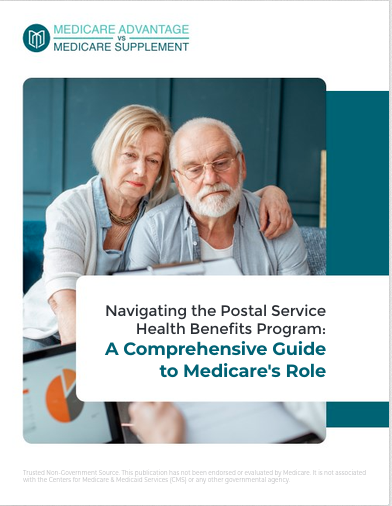Key Takeaways
-
Medicare is a federal health insurance program with different parts covering hospital stays, medical services, and prescription drugs.
-
Understanding how Medicare works can help you avoid coverage gaps and unexpected costs.
Breaking Down Medicare: What You Need to Know
Medicare might seem overwhelming at first, but it doesn’t have to be. If you’re new to the program, understanding its core components is the best place to start. Let’s go over each part of Medicare, how it works, and what you should keep in mind as you enroll.
Medicare Part A: Hospital Coverage
Medicare Part A is all about inpatient care. If you need to stay in a hospital or skilled nursing facility, this is the part of Medicare that helps cover those costs.
What Part A Covers
-
Inpatient hospital stays, including semi-private rooms, meals, and general nursing care.
-
Skilled nursing facility care for short-term recovery.
-
Hospice care for those with terminal illnesses.
-
Limited home health services under specific conditions.
Costs to Consider
Most people don’t pay a premium for Part A because they paid Medicare taxes while working. However, there are other costs like deductibles and coinsurance. For example, in 2025, the inpatient hospital deductible is $1,676 per benefit period.
Medicare Part B: Medical Services
Part B covers outpatient care and doctor visits, making it a crucial part of your overall healthcare coverage.
What Part B Covers
-
Doctor visits and specialist appointments.
-
Preventive services like screenings and vaccinations.
-
Outpatient care, including surgeries and lab tests.
-
Durable medical equipment like wheelchairs and oxygen supplies.
Costs to Consider
Part B comes with a monthly premium, which is $185 in 2025. You’ll also pay a deductible of $257 before coverage kicks in, plus 20% coinsurance for most services after meeting the deductible.
Medicare Part C: Medicare Advantage
Medicare Advantage, also called Part C, is an alternative way to get your Medicare benefits. It combines Part A and Part B coverage, and often includes extra benefits like dental and vision.
What Part C Covers
-
Everything included in Original Medicare (Parts A and B).
-
Often includes prescription drug coverage.
-
May offer additional benefits like vision, dental, and hearing coverage.
Things to Know
These plans are offered by private insurance companies approved by Medicare. Plan costs, provider networks, and covered services vary, so reviewing your options is essential.
Medicare Part D: Prescription Drug Coverage
Prescription drug costs can add up quickly, which is where Medicare Part D comes in.
What Part D Covers
-
A wide range of prescription medications.
-
Brand-name and generic drugs at different coverage levels.
-
Protection against high drug costs with an annual out-of-pocket cap of $2,000 in 2025.
Costs to Consider
Part D comes with a monthly premium, a deductible (which is capped at $590 in 2025), and cost-sharing for medications. Different plans have different formularies, so check if your prescriptions are covered.
How Medicare Works Together
Each part of Medicare serves a specific purpose, but they often work together. If you have Original Medicare (Parts A and B), you might add Part D for drug coverage. If you want an all-in-one option, Medicare Advantage could be a better fit.
Enrollment Windows: When to Sign Up
Signing up for Medicare at the right time is key to avoiding late penalties.
Initial Enrollment Period (IEP)
-
Begins three months before your 65th birthday.
-
Ends three months after your birthday month.
-
Ideal time to enroll to avoid coverage gaps and penalties.
General Enrollment Period (GEP)
-
Runs from January 1 to March 31 every year.
-
For those who missed their IEP.
-
Coverage starts in July, and late penalties may apply.
Medicare Open Enrollment (AEP)
-
Happens annually from October 15 to December 7.
-
Allows you to switch or change plans for the upcoming year.
Special Enrollment Periods (SEPs)
-
Available under special circumstances like losing employer coverage or moving to a new state.
Out-of-Pocket Costs: What You Should Expect
While Medicare helps with healthcare expenses, it’s not free. Here’s what you should budget for:
Premiums
-
Part A is usually premium-free for most people.
-
Part B has a monthly premium of $185 in 2025.
-
Part D premiums vary by plan.
Deductibles
-
Part A: $1,676 per benefit period.
-
Part B: $257 per year.
-
Part D: Up to $590 in 2025.
Coinsurance & Copayments
-
20% for most Part B services.
-
Daily hospital costs after 60 days.
-
Drug costs vary depending on the plan.
Medicare and Other Health Coverage
If you have other health coverage, Medicare can work with it.
-
Employer Coverage: If you’re still working, check if your employer coverage will continue.
-
Retiree Coverage: Some employers offer retiree health benefits that work alongside Medicare.
-
Medicaid: If you have limited income, Medicaid may help cover some Medicare costs.
What Happens if You Delay Enrollment?
Missing your enrollment deadline can lead to higher costs.
-
Part B Late Enrollment Penalty: A 10% increase in premiums for every 12 months you delay.
-
Part D Late Enrollment Penalty: An extra charge added to your monthly premium for every month you go without coverage.
Choosing the Right Medicare Plan for You
With so many options, how do you decide?
-
Assess Your Needs: Do you take prescription medications? Need frequent doctor visits? Travel often?
-
Compare Costs: Look at premiums, deductibles, and out-of-pocket limits.
-
Check Provider Networks: Make sure your doctors accept the plan you’re considering.
-
Review Plan Benefits: Extra perks like vision, hearing, and dental may be important to you.
Making Sense of Medicare for Your Healthcare Future
Understanding Medicare is the first step toward making informed healthcare decisions. Whether you choose Original Medicare with a standalone drug plan or a Medicare Advantage plan, knowing your options ensures you get the coverage you need.









